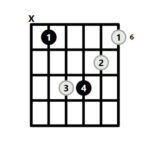Many guitarists dream of rapid improvement, but often find themselves stuck in plateaus. The secret isn’t just about logging hours; it’s about the quality of your practice. Like many dedicated musicians, I once went through an intense period of focused practice, a ‘wood-shedding’ phase, that dramatically transformed my guitar playing. During those years, I consistently practiced 4 to 8 hours a day, 5 to 6 days a week. Looking back, the sheer volume of practice was significant, but the real game-changer was the structured and organized approach I adopted. Simply strumming aimlessly for hours wouldn’t have yielded the same results. Instead, by setting clear objectives, developing a solid Guitar Practice Routine, and tracking my progress, I maximized my musical growth.
This article will guide you through the process of creating a focused and organized guitar practice routine. This approach will help you optimize your practice sessions and ensure you get the most out of your valuable practice time, leading to significant guitar improvement.
Step 1: Assess Your Needs and Start a Practice Journal
Before diving into drills and exercises, take a moment for honest self-assessment. The first step in building an effective guitar practice routine involves introspection and planning. I’ve found that writing things down is incredibly helpful in this stage. It provides clarity and helps in strategizing your practice approach. Start a practice journal – it can be a notebook or a digital document – and begin by noting down the following:
Firstly, realistically evaluate the amount of time you can dedicate to daily guitar practice. Be honest with yourself about your schedule and commitments. Next, identify the areas of your guitar playing you want to improve. Think about both short-term and long-term goals. What’s the logical next step in your musical journey? Are there bigger, more distant goals you’re aiming for?
Now, reconcile your list of improvement areas with your available practice time. Consider breaking down your routine into focused segments of 10 to 20 minutes each, with each segment targeting a specific skill. Prioritize and narrow down your list to fit within your time constraints. This initial assessment is crucial for a targeted guitar practice routine.
Step 2: Craft Your Personalized Guitar Practice Routine
With a clear understanding of your goals, areas for improvement, and available time, you can start building a detailed guitar practice routine. Break down your practice time into 10 to 20-minute segments and assign specific exercises to each. Think about how you will approach improving each skill. This is a vast topic, but exploring resources on creating guitar exercises can be beneficial. Develop specific exercises and practice methods that directly address your identified areas for improvement.
Consider the order of your exercises as well. While the sequence might not always be critical, sometimes certain exercises benefit from being performed back-to-back or preceding others. Once you have your exercises planned, write out a detailed schedule in your practice journal. Map out each exercise, its duration, and the order you’ll follow, down to the minute.
Remember, your guitar practice routine doesn’t need to be static. To effectively manage multiple areas for improvement within limited practice time, consider an alternating routine. For example, you could have Routine A for Monday, Wednesday, and Friday, and Routine B for Tuesday, Thursday, and Saturday. This approach is effective if you practice daily. However, if your practice schedule is less frequent, sticking to the same routine each session might be more beneficial for consistency.
Step 3: Commit to Your Practice
The next step is action: put your planned guitar practice routine into practice! Sit down with your guitar and diligently follow the schedule you’ve created.
Be strict with yourself about adhering to the allocated time for each segment, even setting an alarm to stay on track. When engrossed in an exercise, it’s easy to lose track of time and exceed the planned duration. While this might seem productive in the moment, it can disrupt the balance of your entire routine.
In each practice segment, aim for a structure of review and warm-up followed by a focus on making a small, measurable improvement. A good guideline is the 90/10 rule: dedicate approximately 90% of the time to review and warm-up, and 10% to pushing boundaries and making new progress. For instance, when practicing scales, review familiar patterns before exploring a new pattern or position on the neck. If working on speed exercises, spend most of the time building up to your previous speed level, and then push slightly beyond. Remember, consistent repetition is key to solidifying any skill and making it usable in actual playing situations, making review a valuable part of every guitar practice routine.
After each practice segment, make a quick entry in your practice journal. Note what you worked on, any insights or observations you want to remember, and metronome speeds used. This log will be invaluable for tracking progress and making future adjustments to your routine.
Step 4: Regularly Reassess and Adjust
Consistency is crucial, but so is adaptability. Make it a point to reassess your guitar practice routine regularly, ideally once a week, or more frequently if you practice many hours daily. Your routine should be a dynamic, evolving plan.
Over time, you might notice that certain segments need more or less time. You might discover that some exercises are less effective than anticipated and need to be replaced. Your available practice time might also change. Regular reassessment ensures your routine remains aligned with your goals and time constraints, making it a truly effective guitar practice routine.
After each reassessment, create a new detailed routine for the upcoming days or week. This iterative cycle of planning, practicing, and reassessing is fundamental to continuous improvement and maximizing the effectiveness of your guitar practice.
The Empowering Benefits of a Structured Routine
Adopting an organized guitar practice routine can be incredibly empowering and motivating. During my own periods of structured practice, I experienced several key benefits:
- Practice time becomes more engaging and flies by. Even during long 6-8 hour practice days, breaking the time into focused 10-20 minute segments made the time pass quickly. Often, I felt like I was racing against the clock to complete each segment within the allotted time.
- It unlocks hidden practice time. Finding large blocks of time for guitar practice can be challenging in a busy schedule. However, with a routine structured in short segments, you can integrate practice into smaller pockets of time throughout the day. Suddenly, those spare 15 minutes become valuable opportunities for focused practice, making it easier to accumulate extra practice hours.
- Tracking progress fuels motivation. Maintaining a practice journal provides tangible evidence of your improvement. Seeing concrete results from your practice efforts is incredibly motivating. Practice ceases to feel like aimless repetition and becomes a purposeful path to progress.
This sense of empowerment and motivation is perhaps the most significant advantage of developing a structured guitar practice routine. It’s valuable even for guitarists without professional musical aspirations. We all want to feel that our practice time is productive and meaningful. If you feel lost or unmotivated in your guitar practice, try getting organized. You might be surprised by the transformative impact of a well-structured guitar practice routine.


